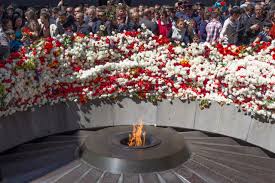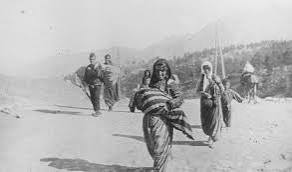
In the shadows of World War I, a systematic massacre unfolded—one that would claim the lives of an estimated 1.5 million Armenians at the hands of the Ottoman Empire. Known today as the Armenian Genocide, this atrocity represents not only one of the first genocides of the modern era but also one of the most persistently denied. For more than a century, the Armenian people and their descendants have sought recognition and justice for this crime, while many world powers remained silent out of fear or political convenience. This article seeks to recount, in its full scope, the tragedy, memory, and ongoing battle for truth surrounding the Armenian Genocide.
Chapter 1: The Armenians Before the Storm
Long before the 20th century, Armenians had lived in the lands stretching across Eastern Anatolia for millennia. With a rich cultural, religious, and historical identity, they were among the first peoples to adopt Christianity as a state religion. Under the Ottoman Empire, they were classified as “dhimmi”—non-Muslim subjects—granted protection but also subjected to heavy taxation, legal inequality, and periodic persecution.
Despite being second-class citizens, Armenians thrived as artisans, merchants, and professionals. By the late 19th century, however, nationalistic currents in the Ottoman Empire began to ferment. As the empire declined and the Balkan nations broke free, Ottoman rulers increasingly saw the Christian Armenians as a threat to the integrity of a pan-Islamic state.
Chapter 2: Seeds of Hate – The Hamidian Massacres
The first significant wave of violence against Armenians came between 1894 and 1896 under Sultan Abdul Hamid II. In what became known as the Hamidian Massacres, between 100,000 and 300,000 Armenians were killed across the empire. These atrocities shocked the world, with reports and photographs circulating in European and American newspapers.
Sultan Abdul Hamid infamously responded to Western criticism by saying:
“I will soon settle the Armenian question to such an extent that there will not be an Armenian left in Anatolia.”
While these massacres did not yet constitute genocide, they set a chilling precedent and normalized the idea that Armenians could be massacred with impunity.
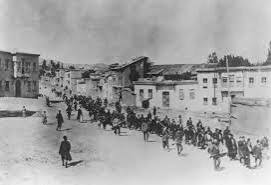
Chapter 3: The Young Turks and a Deadly Vision
The Committee of Union and Progress (CUP), also known as the Young Turks, took control of the Ottoman government in 1908. While initially promising reform and equality for all ethnic groups, their rule took a dark and nationalistic turn. By 1913, the CUP had transformed into a dictatorial regime led by the infamous trio: Talaat Pasha, Enver Pasha, and Djemal Pasha.
Their goal? To “Turkify” the empire by eliminating perceived threats. With World War I as cover, the Armenians—viewed as internal enemies aligned with Russia—became the primary target.
Chapter 4: April 24, 1915 – The Beginning of the End
On the night of April 24, 1915, Ottoman authorities arrested over 200 Armenian intellectuals, clergy, writers, and political leaders in Constantinople (modern-day Istanbul). Most were later executed. This event marked the formal beginning of the Armenian Genocide and is commemorated annually by Armenians worldwide.
What followed was not a chaotic consequence of war—but a meticulously planned extermination campaign.
Chapter 5: Deportations, Death Marches, and Massacres
The Ottoman government issued orders for the forced deportation of Armenians from their ancestral homelands. While termed “relocations,” these deportations were in fact death marches.
- Men were separated from their families, taken to remote areas, and summarily executed.
- Women, children, and the elderly were forced to march for hundreds of miles across the Syrian desert toward Deir ez-Zor, without food, water, or shelter.
- Gendarmes and local militias raped, looted, and massacred deportees along the way.
Entire villages were emptied, churches burned, and bodies thrown into rivers or buried in mass graves. Eyewitnesses reported rivers running red with blood, while starving children fed on grass and corpses.

Chapter 6: Eyewitnesses and Testimonies
Though the Ottoman Empire tried to mask its actions under the fog of war, the world did see. American missionaries, diplomats, and foreign journalists documented the unfolding horror. One of the most vocal witnesses was Henry Morgenthau Sr., the U.S. ambassador to the Ottoman Empire.
“I am confident that the whole history of the human race contains no such horrible episode as this… It is the greatest crime of the ages.” — Henry Morgenthau Sr.
Armenian survivors also gave heart-wrenching testimonies—tales of mothers forced to abandon dead infants in the desert, children who watched their entire families slaughtered, and women who threw themselves into rivers to escape rape.
Chapter 7: The Final Toll – How Many Died?
The true number of victims remains uncertain due to the destruction of records and mass graves. Most scholars estimate between 800,000 and 1.5 million Armenians were killed. Entire communities were obliterated.
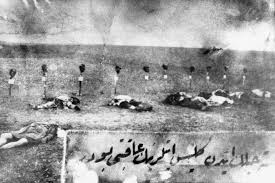
Of those who survived:
- Thousands converted to Islam under duress.
- Others were trafficked into slavery or adopted into Turkish and Kurdish households.
- Many fled, forming the modern Armenian diaspora.
Chapter 8: The Role of Kurdish Militias
While the genocide was orchestrated by the Ottoman leadership, Kurdish tribal militias played a major role in executing the atrocities in eastern Anatolia. Many Kurds participated in the looting, rape, and murder of Armenians—although some, it must be said, also sheltered their Armenian neighbors at great personal risk.
This historical involvement has added to modern tensions between Kurds and Armenians, though recent decades have seen some Kurdish groups openly apologize for their ancestors’ role.
Chapter 9: Cultural Erasure – The Other Genocide
Genocide is not just the killing of people; it is the erasure of a culture. During and after the massacres:
- Thousands of churches, monasteries, and schools were destroyed or converted into mosques and barracks.
- Cemeteries were desecrated.
- Ancient manuscripts were burned.
- Armenian names of towns and villages were replaced with Turkish ones.
The goal was clear: eliminate not just the people, but all traces of their existence.

Chapter 10: Turkey’s Century of Denial
After the war, the three masterminds—Talaat, Enver, and Djemal—fled the country. None faced Turkish justice. Instead, they were hunted down and assassinated by Armenians as part of Operation Nemesis.
The newly formed Republic of Turkey under Mustafa Kemal Atatürk rejected responsibility for the genocide. To this day:
- Turkish textbooks omit or distort the genocide.
- Using the word “genocide” can lead to prosecution under laws against “insulting Turkishness.”
- Denial is a state policy, with well-funded campaigns targeting scholars and foreign governments.
Chapter 11: The World’s Silence – Politics Over Truth
Why has the world stayed so silent? The answer lies in geopolitics. Turkey’s strategic location—bridging Europe and the Middle East—makes it a critical NATO ally.
- For decades, the United States avoided recognition to preserve its military relationship.
- Israel, despite its history with the Holocaust, also withheld recognition due to defense ties with Turkey.
- Many European nations were similarly complicit, prioritizing diplomacy over justice.
Only in recent years has a growing chorus of countries recognized the genocide—among them France, Germany, Canada, Argentina, and finally the United States in 2021 under President Biden.

Chapter 12: The Armenian Diaspora and the Fight for Memory
Today, over 10 million Armenians live outside Armenia, most of them descendants of genocide survivors. Communities in Los Angeles, Paris, Beirut, and Moscow continue to carry the torch of remembrance.
They build memorials, organize protests, write books, produce films, and lobby governments to ensure that the genocide is never forgotten or denied.
April 24th is now marked every year as Armenian Genocide Remembrance Day—a day of pain, resilience, and collective memory.
Chapter 13: Echoes in Other Genocides
The Armenian Genocide became a blueprint for future atrocities. Before launching the Holocaust, Adolf Hitler famously said:
“Who, after all, speaks today of the annihilation of the Armenians?”
His words were not rhetorical—they were calculating. The world’s failure to hold the Ottomans accountable emboldened future tyrants.
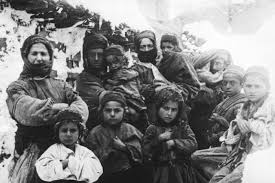
Chapter 14: The Road to Justice – Still Unfinished
Although recognition is important, true justice for the Armenian Genocide remains elusive.
- No reparations have been paid.
- Armenian lands remain part of modern-day Turkey.
- Cultural sites continue to decay.
But justice is not only about punishment—it is about truth, memory, and preventing recurrence. And in that regard, every act of recognition is a victory for human dignity.
Conclusion: Truth Cannot Be Buried
More than a century after the Armenian Genocide, the wounds still ache. They ache in the hearts of descendants, in the stones of ruined churches, in the silence of forgotten villages.
But truth has a way of surviving. Despite denial, censorship, and fear, the story of the Armenian Genocide has not died. It lives on through survivors’ voices, through history’s reckoning, and through every person who chooses to speak the truth.
To remember the genocide is to resist tyranny.
To honor the victims is to defend humanity.
Here you can read another article on another genocide https://worldtoday.online/2025/03/28/the-silent-genocide-chinas-ethnic-purge-of-the-uyghurs-and-the-worlds-deafening-silence/
